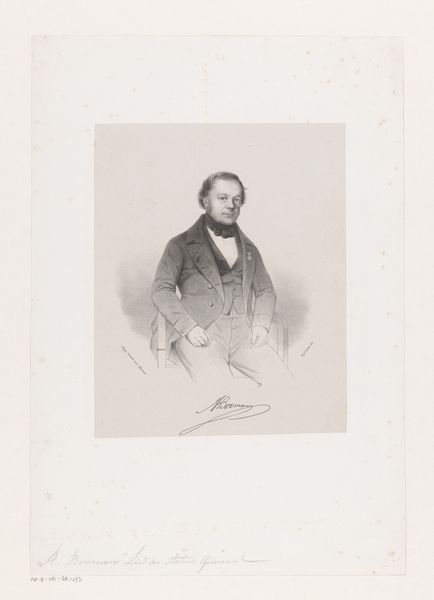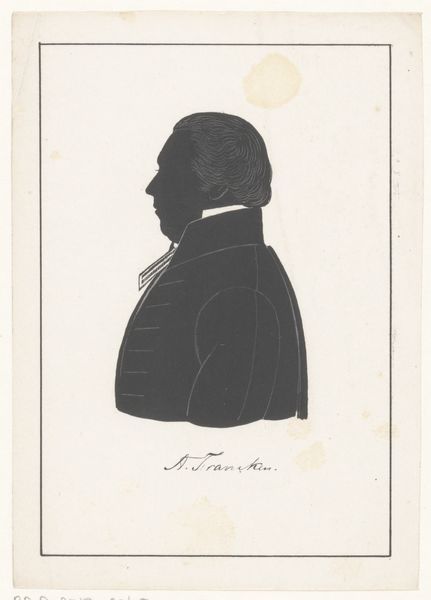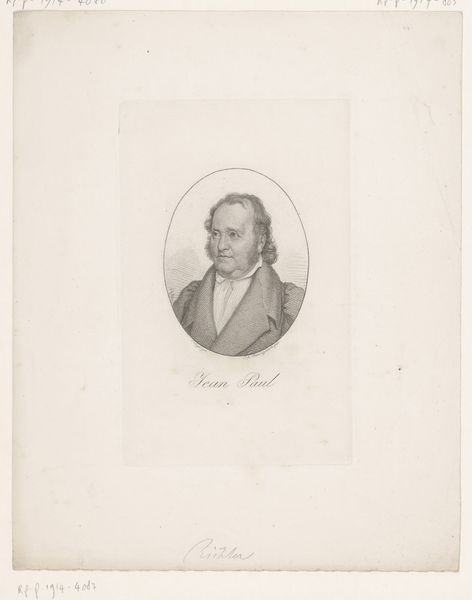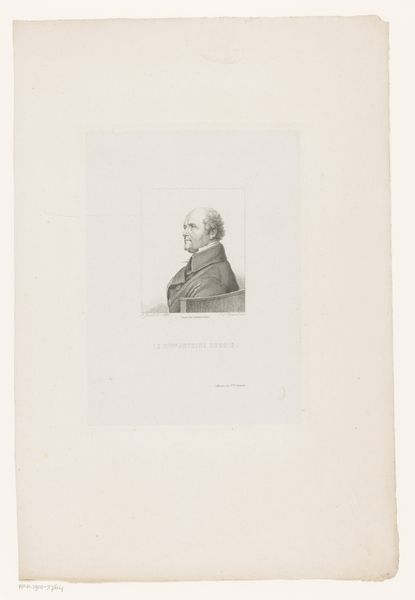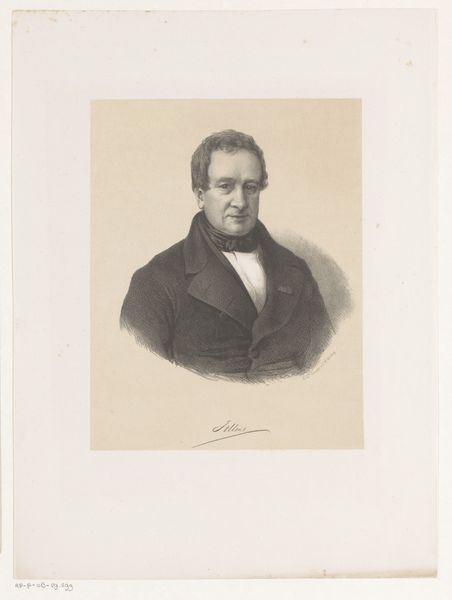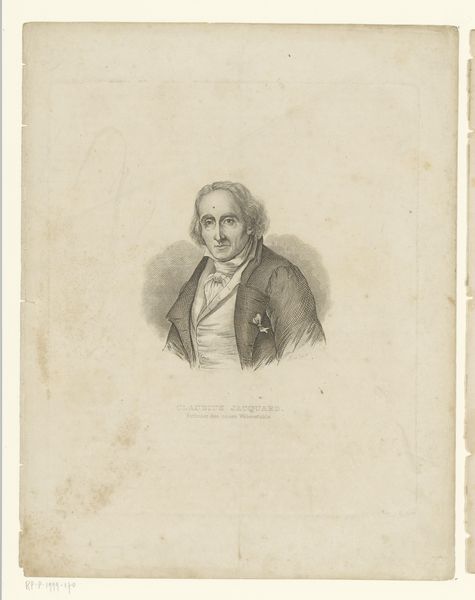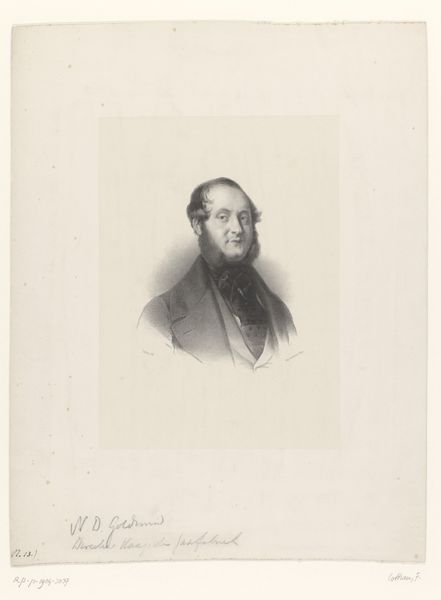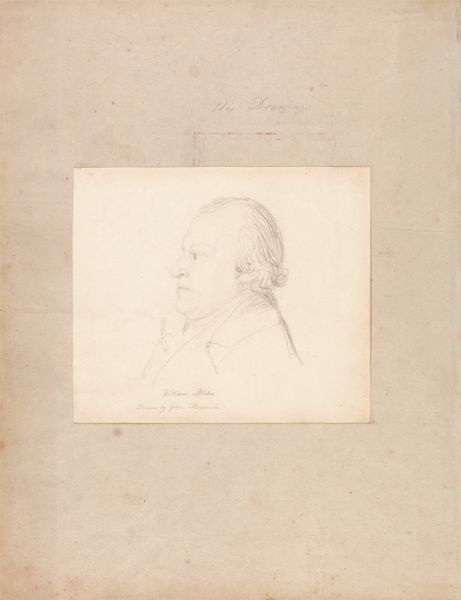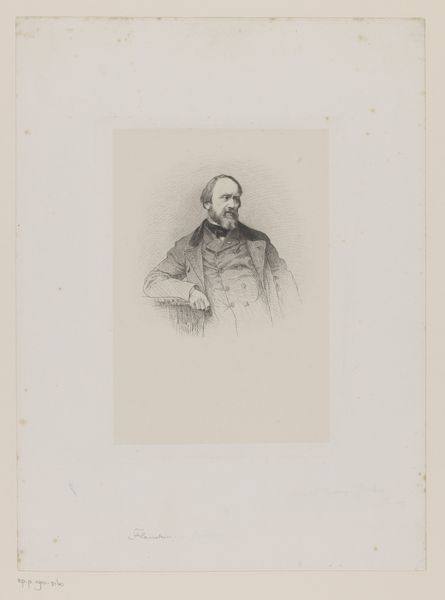
paper, engraving
#
portrait
#
paper
#
romanticism
#
engraving
Dimensions: height 274 mm, width 181 mm
Copyright: Rijks Museum: Open Domain
Editor: So here we have Antoine Maurin's "Portret van Jean Lacave-Laplagne" from 1845. It's an engraving on paper, a profile really. I find it rather formal, imposing even, yet there’s a vulnerability there in his slightly downturned gaze. What strikes you about this work? Curator: Vulnerability is key, I think. Look how Maurin used engraving, a meticulous, time-honored method, to portray not just a minister, but a human. The Romantic era wrestled with individual emotion against social expectation. Do you sense that tension here? Editor: Absolutely! The rigid collar and jacket suggest status, but the softness of the shading around his face hints at inner feelings. Curator: Exactly! Consider also the limitations and possibilities of engraving itself. Maurin isn't just copying an image; he's interpreting it through line and tone. Every mark is a decision, layering meaning into the portrait. Do you find that enhances the Romantic feel? Editor: Definitely. The contrast isn't as stark as in some engravings, lending a gentler, more intimate feel that fits the era perfectly. It humanizes the subject more, makes him accessible despite the status that you see through the image. Curator: Indeed. The paper, the line, the very act of capturing this man – it's all imbued with a sensitivity that transcends mere representation. And maybe touches something universal in us all, reflecting about our own lives. Editor: I never thought about engraving that way. It's more than just a process; it's a conversation between the artist, the subject, and now, us. Curator: Art is about feeling! Hopefully everyone who comes and sees this will feel something of themselves.
Comments
No comments
Be the first to comment and join the conversation on the ultimate creative platform.
